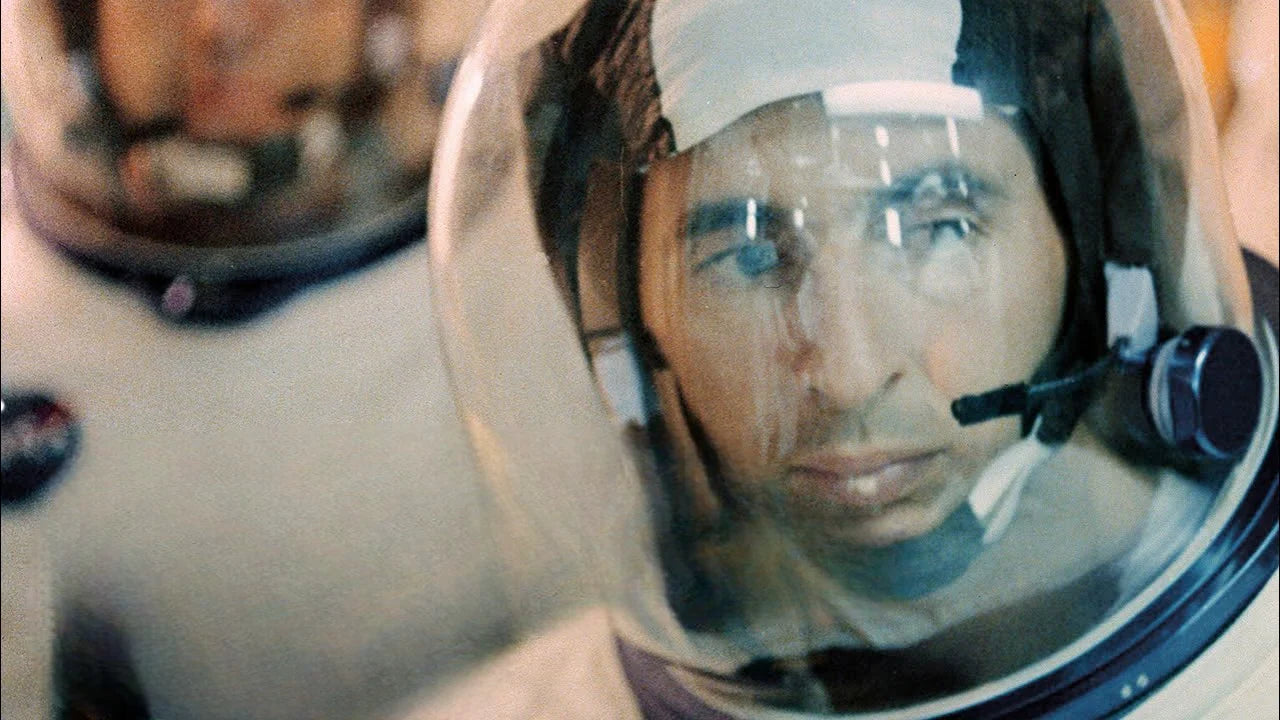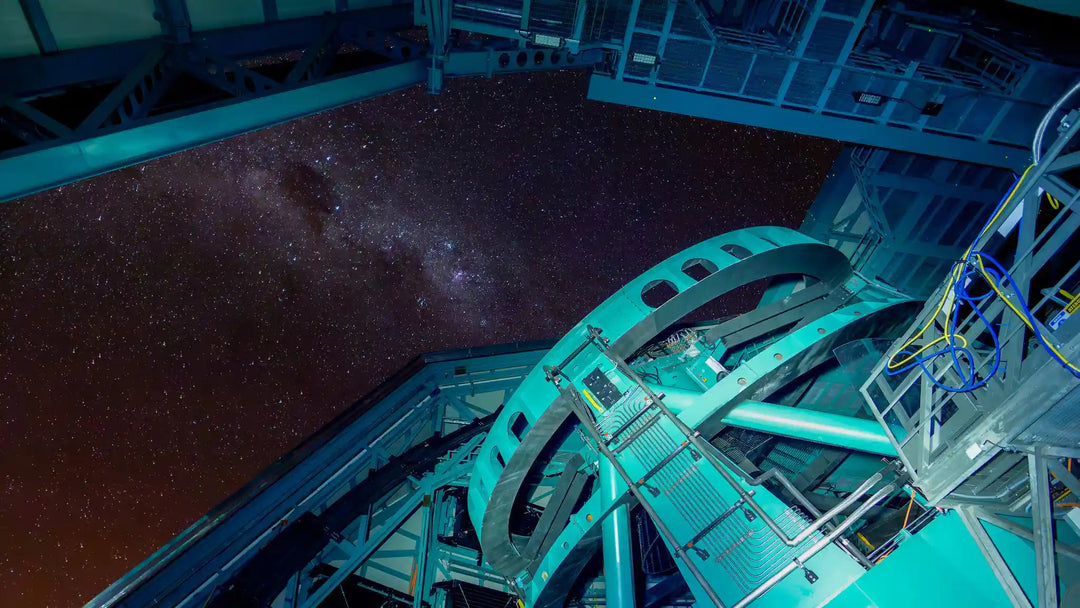William Bill Anders Tribute: Astronaut, Earthrise Photographer, Aviator

William Bill Anders is a name etched in the annals of space exploration history. A multifaceted individual, he has made significant contributions as a pilot, astronaut, businessman, and photographer. Best known for capturing the iconic "Earthrise" photograph during the Apollo 8 mission, his legacy extends far beyond that single moment. This tribute aims to highlight his incredible journey and lasting impact on science, space exploration, and culture.
Early Life
Born on October 17, 1933, in Hong Kong, William Alison "Bill" Anders’ early years were marked by turbulence and resilience. His family fled Nanking during the Japanese invasion, a daring escape that included perilous journeys and a maritime exodus. These formative experiences instilled in him the tenacity and spirit that would later define his remarkable career.
Before NASA
Bill Anders graduated from the United States Naval Academy in 1955 and chose to be commissioned as a second lieutenant in the United States Air Force, serving with distinction as both a skilled fighter pilot and an adept nuclear engineer. During his military career, he flew the Northrop F-89 Scorpion and later the McDonnell F-101 Voodoo.
Key Points
-
Graduated from the U.S. Naval Academy in 1955.
Served as a fighter pilot, flying F-89 Scorpions and later F-101 Voodoos.
Specialized in nuclear engineering, which set the stage for his later contributions to NASA’s space program.
His aspirations to become a test pilot led him to the Air Force Institute of Technology, where he specialized in nuclear engineering—a detour that later proved to be fortuitous.
"I thought I’d like to be a test pilot," Anders recalled. "But the Air Force was interested in me for the Airborne Nuclear Propulsion program".
NASA
Bill Anders' journey to NASA was marked by tenacity and a bit of serendipity. In October 1963, he was invited to join NASA’s third group of astronauts, a pivotal moment that set the course for his future achievements. Anders played critical roles in environmental control systems, dosimetry, and radiation effects, contributing significantly to the Apollo program's success.
“I told NASA I was just the guy for them—the world’s greatest pilot—and that I could solve their radiation problems,” Bill Anders recounted.
Gemini Program
Anders' first major assignment at NASA was within the Gemini program. In January 1964, he reported to Houston, diving into responsibilities that included dosimetry, radiation effects, and environmental controls. Here, Anders began preparing for space by undertaking rigorous training and coursework in spacecraft systems. Despite not being a test pilot, Anders was chosen to serve as a backup pilot for the Gemini XI mission alongside Neil Armstrong. This mission focused on high-altitude rendezvous, docking with an Agena target vehicle, practice docking, and performing Extra-Vehicular Activities (EVAs).
“We were given increasing responsibility for our assignments,” Anders said. “I was in charge of the environmental control system engineering and designed the radiation dosimeter. But not being a test pilot in a gang of test pilots, I was a bit of a second-rate citizen. They treated me alright, but I wasn’t at the top of everybody’s list to fly.”
Being on the backup team was initially a disappointment, but it was presumed that Anders and Armstrong would rotate and fly on Gemini XIII. However, the Gemini program was so successful that it concluded with Gemini XII, and the focus shifted to the Apollo missions.
Read more:
Apollo 8 and Earthrise
Bill Anders’ most famous mission was Apollo 8. On December 24, 1968, the Apollo program's command capsule made the first human circumnavigation of the Moon.
However, Anders' initial role was to help NASA test and land lunar modules on the moon. Reflecting on this change of plans with PBS’s NOVA program, Anders remarked, “That bothered me a lot, but when you get dealt lemons, you've got to make lemonade out of it. And a lot of people would have killed to have my bad job.”
According to Borman, Apollo 8 Commander:
“Rookie Bill Anders was thirty-five, slightly built, a devout Roman Catholic, and very serious minded. I'm not sure he ever got used to my rough sense of humor or Lovell's free-wheeling spirit. But Anders was one hell of a worker, a superb technician and all in all a great guy. Anders was always friendly and cooperative, but he avoided the usual astronaut bull sessions. Some of the guys regarded him as a younger version of Frank Borman in his single-minded concentration on work, his aversion to the unnecessary conversation”

Apollo 8’s command and service module had visibility much like a submarine. Anders, the designated photographer, captured numerous scheduled photographs. During their fourth orbit, however, Anders took a pivotal, unscheduled photo—the first color photograph of Earth rising over the Moon’s horizon.
“We spent all our time on Earth training about how to study the moon, how to go to the moon. It was very lunar-oriented, yet when I looked up and saw the Earth coming up on this very stark beat-up lunar horizon, an Earth that was the only color that we could see, a very fragile-looking Earth, a very delicate-looking Earth. I was immediately almost overcome with the thought, you know, here we came all this way to the moon, and yet the most significant thing we're seeing is our own home planet, the Earth.”

Despite his initial disappointment, Anders’ role as lead photographer led to one of history’s most influential images. The Earthrise photograph showcased the striking contrast between the barren lunar surface and the vibrant, living Earth, highlighting the planet's fragility and unity.
"That photograph, shared globally and always in the public domain, has since served to educate and inspire: The Earth we saw rising over the battered grey lunar surface was small and delicate, a magnificent spot of color in the vast blackness of space."
Impact
The Earthrise photograph has been lauded as one of the most influential environmental images ever taken, often credited with inspiring the first Earth Day and numerous environmental consciousness initiatives.
“We came all this way to explore the Moon, and the most important thing is that we discovered the Earth.”
There are some Bill reflections about the Earthrise :
"The most impressive aspect of the flight was [when] we were in lunar orbit. We’d been going backwards and upside down, didn’t really see the Earth or the Sun, and when we rolled around and came around and saw the first Earth rise. That certainly was, by far, the most impressive thing."
"To see this very delicate, colorful orb which to me looked like a Christmas tree ornament coming up over this very stark, ugly lunar landscape really contrasted."
“From one lunar distance, our world was easily obscured. At 10 lunar distances, Earth would have been but the size of a ladybug. And at 100 — then and now far beyond human reach — Earth would no longer be visible to the naked eye. Here was everything humans had been, everything we were, and everything we might become — and yet our home planet was physically insignificant in space."
If you want to know more about the Earthrise photo history, be sure to read our article: The Earthrise Photo: A Journey Through Earth’s Iconic Space Portrait

After NASA and Space Life
Post-Apollo, Anders transitioned to influential roles outside of NASA.
He served as the executive secretary of the National Aeronautics and Space Council from 1969 to 1973, where he was instrumental in shaping post-Apollo space initiatives, including the Space Shuttle program. He later held significant positions in the Atomic Energy Commission and became the first chairman of the Nuclear Regulatory Commission.
Key Contributions
Anders played a crucial role in the development of the Space Shuttle program.
Bill held leadership positions in nuclear regulatory agencies.
“I thought the American public was supporting Apollo not because they wanted science or even because they wanted exploration, they wanted to show those 'dirty commies' that America [was still #1 technologically].”
In 1973, Anders was appointed as a commissioner to the Atomic Energy Commission (AEC). Here, Anders brought his engineering acumen to complex issues of nuclear power and policy and facilitated U.S.-Soviet cooperation in nuclear fusion research, embodying cross-border scientific collaboration during the Cold War.
In 1975, Anders was named the first chairman of the Nuclear Regulatory Commission (NRC) following the Energy Reorganization Act, which split the AEC into research and regulatory bodies. His leadership in the NRC was characterized by a push for greater transparency and safety in nuclear operations.
“The Nixon White House, in its perverse but maybe correct way, said, ‘What we don’t want are a bunch of lawyers institutionalizing this new Nuclear Regulatory Commission around themselves, so we’ll send Anders over there, because he’s not a lawyer and has shown some leadership and organizational talent,’” Anders explained.
His government service continued until 1977 when he was appointed the U.S. Ambassador to Norway. Reflecting on the experience, Anders found diplomatic service rewarding, likening it to an opportunity to represent the values and interests of his nation abroad.
Corporate Ventures and Business Acumen
After retiring from public service, Bill Anders entered the corporate world, joining General Electric in September 1977 as vice president and general manager of the Nuclear Products Division. His tenure saw him managing the production of nuclear fuel and reactor components, honing his management skills. Anders later attended Harvard Business School's Advanced Management Program in 1979 as preparation for larger roles.
In January 1980, he became the general manager of the GE Aircraft Equipment Division. During his time at GE, Anders focused on aviation-related technologies, including flight control systems and radar equipment. His leadership helped improve GE's market position significantly.
Key Points
General manager of GE's Aircraft Equipment Division, improving its market performance.
Led GE’s Nuclear Products Division, managing key nuclear technologies.
“I told them I really liked aviation, so they assigned me that division, which we made very successful,” Anders recounted.
In 1988, Anders retired from the Air Force Reserves with the rank of Major General. Soon after, he joined Textron as Senior Executive Vice President for Aerospace. Although his tenure at Textron was short, it provided ample opportunities to leverage his vast aviation experience.
By 1990, Anders had transitioned to General Dynamics, taking on the role of vice chairman and, soon after, chairman and CEO. Under his leadership, the company underwent significant restructuring, including the sale of underperforming divisions and a focus on profitability. His efforts were instrumental in transforming General Dynamics into a more agile and financially robust company. Warren Buffet's investment in the company underscored the market's confidence in Anders' leadership.
Key Contributions
Led General Dynamics through a successful restructuring phase.
Focused on profitability and streamlined operations, earning market confidence.
“Warren Buffet liked what he saw and decided to invest in the company,” noted Anders. “Before long, we became the darling of Wall Street.”
Business Decisions
During his tenure as CEO, Anders made the strategic decision to sell the F-16 fighter division to Lockheed Martin for $1.5 billion, an offer well above market expectations. This decision aligned with his vision of focusing on fewer, more profitable products.
"Anders made the rational business decision, the one that was consistent with growing per share value," noted William N. Thorndike Jr. in his book, explaining Anders' strategic and mission-focused leadership style.
Check also:
Heritage Flight Museum
In 1996, Anders founded the Heritage Flight Museum, at Bellingham International Airport in Washington, which moved to Skagit Regional Airport in Burlington, Washington, in 2014.
The museum is dedicated to preserving and flying historic military aircraft, a testament to Anders’ lifelong passion for aviation and his commitment to honoring military history.
The Heritage Flight Museum, lovingly operated by the family of William "Bill" Anders, had Anders serving as president until 2008. His wife, Valerie, took on the role of secretary, their son Greg as vice president, executive director, and webmaster, and their son Alan as vice president and director of maintenance.
Highlights and Contributions
The Heritage Flight Museum offers a unique collection of vintage warbirds, with a special focus on aircraft from the U.S. Army Air Corps and Air Force.
It serves not only as a repository of historical aircraft but also as an educational institution, providing insights into the role of these military planes in shaping American history.
“We don’t play golf. We’re a formation-flying family on the weekends,” Anders shared, reflecting on the family's passion for aviation.
Impact and Vision
The museum’s vintage collection includes aircraft like the North American P-51D Mustang, Val-Halla, and other significant planes such as the PT-13 Stearman Kaydet and the A-1 Skyraider named Proud American.
The Heritage Flight Museum is dedicated to helping the public understand and appreciate the contributions that military aircraft and their pilots have made to American heritage, national security, and freedom.
The museum frequently participates in air shows and veteran ceremonies, offering dynamic flying displays that keep history alive for new generations.
William Bill Anders Legacy
William A. Anders left an indelible mark on space exploration, aviation, and environmental consciousness. His life's work continues to inspire future generations to look to the skies with curiosity and respect for our home planet.
Key Points
Captured the iconic "Earthrise" photograph.
Played significant roles in shaping space exploration and nuclear energy policies.
Founded the Heritage Flight Museum to preserve aviation history.
When reflecting upon the significance of the Apollo program and his post-NASA career, Anders noted,
I’m not that famous, and I’m certainly not glib, so maybe I’d really ought to [get real] work for a living.’... The shareholders at General Dynamics couldn’t have cared less whether I had been at the Moon or not. So it helped me some but not all that much
William Bill Anders' Death
On June 7, 2024, at the age of 90, Anders tragically passed away while piloting his cherished vintage T-34 aircraft.
The plane crashed into the waters of North Puget Sound between Jones Island and Orcas Island, eventually sinking after catching fire. Witnesses reported seeing the aircraft nosedive into the narrow channel between the islands, prompting a swift search by the U.S. Coast Guard and the San Juan County Sheriff's Department. Later that day, Greg Anders confirmed his father's death and announced that his body had been recovered.
With an illustrious career beginning in the Air Force, Bill Anders had logged over 8,000 flight hours—a testament to his lifelong passion and dedication to aviation.
William Bill Anders: Summary
William Bill Anders was a man of many talents and accomplishments. His journey from a young boy fleeing conflict to becoming a revered astronaut and his post-NASA leadership roles showcase a life of resilience, innovation, and inspiration.
Key Takeaways
Born in turbulent times, Anders' early life shaped his resilience.
His multifaceted career spanned roles as a fighter pilot, astronaut, and nuclear engineer.
Captured the iconic "Earthrise" photograph, sparking the environmental movement.
Continued to influence science and policy through various leadership roles.
He was a Executive Secretary for the National Aeronautics and Space Council (1969-1973)
First chairman of the Nuclear Regulatory Commission
U.S. Ambassador to Norway (1976-1977)
Held executive positions at General Electric, Textron, and General Dynamics
Founded the Heritage Flight Museum, preserving aviation history.
FAQ section
Who William Bill Anders is?
William Bill Anders is an American astronaut known for capturing the iconic "Earthrise" photograph during the Apollo 8 mission.
What is Bill Anders famous for?
Bill Anders is famous the most for taking the "Earthrise" photograph during the Apollo 8 mission.
What was the significance of the "Earthrise" photograph?
The "Earthrise" photograph is credited with sparking the environmental movement by highlighting Earth's fragility.
What did William Anders do after leaving NASA?
After NASA, William Anders served in various leadership roles, including as the first chairman of the Nuclear Regulatory Commission and vice president at General Electric.
What is the Heritage Flight Museum?
The Heritage Flight Museum, founded by Bill Anders, is dedicated to preserving and flying historic military aircraft.
What contributions did Bill Anders make to the Apollo program?
Bill Anders contributed to the Apollo program through his technical expertise in dosimetry, radiation effects, and environmental control systems.
Where is the Heritage Flight Museum located?
The Heritage Flight Museum is located at Skagit Regional Airport in Burlington, Washington.
What leadership roles did Bill Anders hold in nuclear regulatory agencies?
Bill Anders served as a commissioner of the Atomic Energy Commission and as the first chairman of the Nuclear Regulatory Commission.
When did William Bill Anders pass away?
William Bill Anders passed away on June 7, 2024.
Resources:
- NASA, William A Anders - Biographical Data, [1.07.2024]
- P. Rollins, Interview with William A. Anders - transcript, NASA JSC History, [1.07.2024]
- J. Levasseur, Through the Eyes of Bill Anders, National Air and Space Museum, [1.07.2024]
- San Diego AirSpace Museum, Hall of Fame - William Anders, [1.07.2024]
- Heritage Flight Museum, Major General William Anders, [1.07.2024]
- E. Gamillo, William Anders, NASA Astronaut, and US Air Force Major General, dies at 90, Astronomy.com, [1.07.2024]
- J. Kunzler, Apollo 8 Astronaut & Heritage Flight Museum Founder William Anders Passes Away, Simple Flying, [1.07.2024]
- M. Stone, Apollo 8 Astronaut William Anders Dies in Plane Crash at 90, Hernando Sun, [1.07.2024]
- Bill Anders: A Love Of Afterburners, Airport Journals [1.07.2024]
- Brittanica, William A Anders, [1.07.2024]
- WikiQuotes, Bill Anders, [1.07.2024]
- Wikipedia, William Anders, [1.07.2024]










![Vera C. Rubin Observatory: Revolutionizing Astronomy Through the World's Most Advanced Telescope [All You Need To Know]](http://astrography.com/cdn/shop/articles/vera-c.-rubin-observatory_main.webp?v=1751627507&width=1080)

Leave a comment